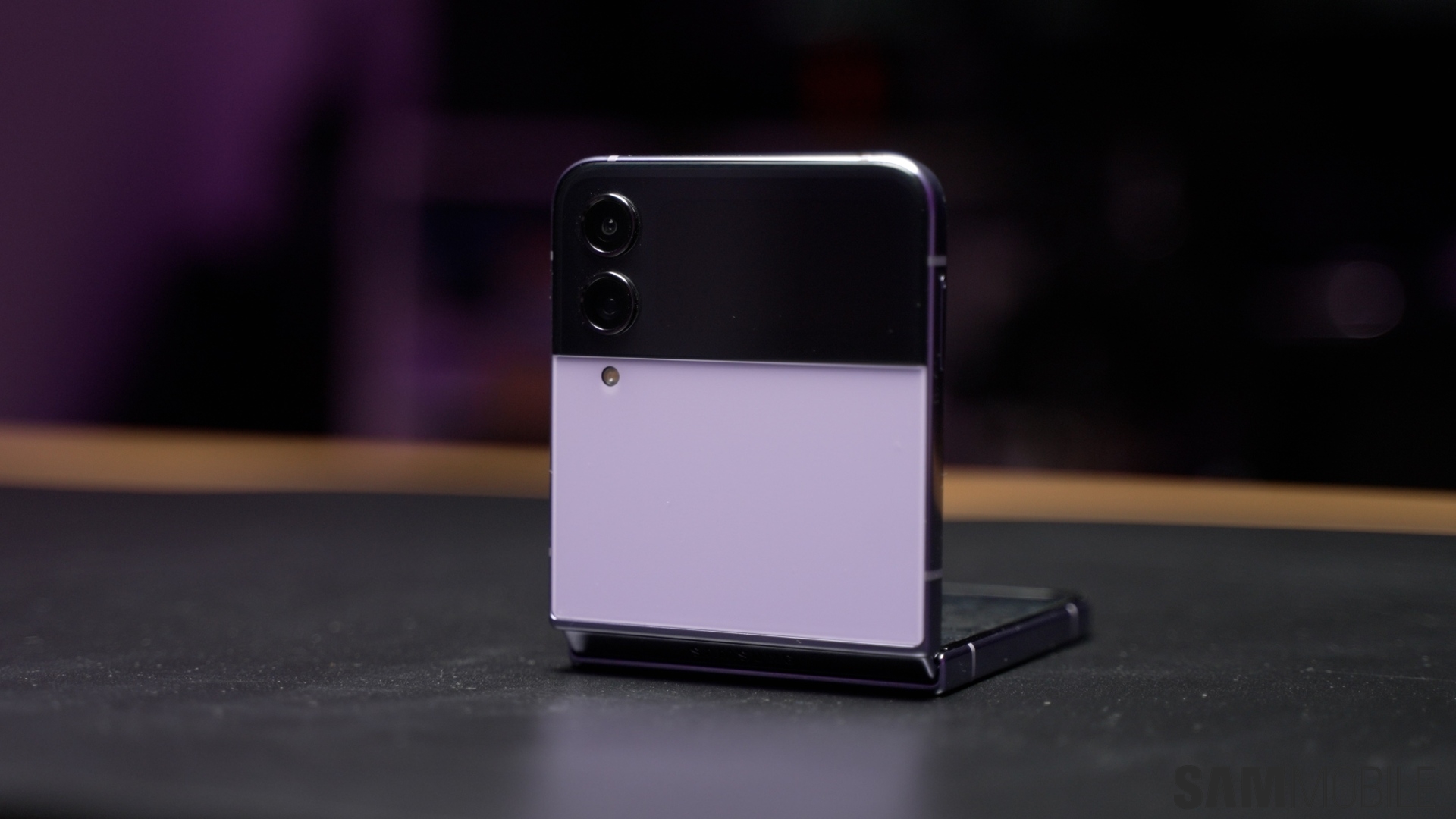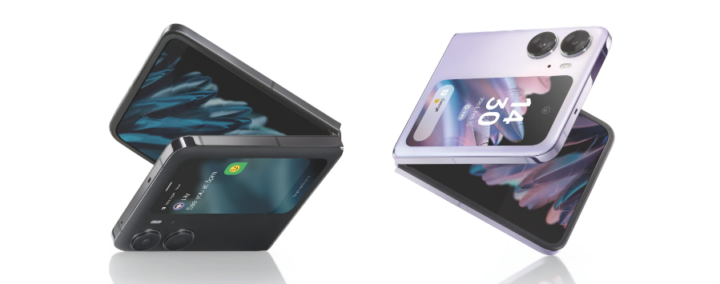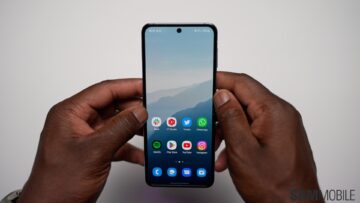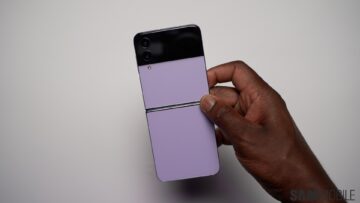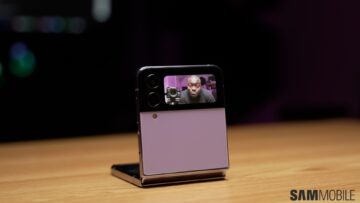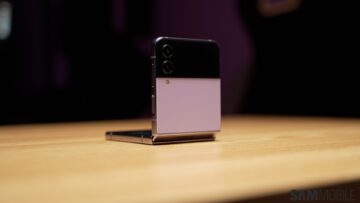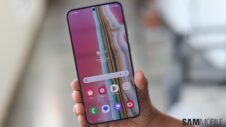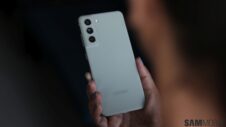Oppo released its response to the Galaxy Z Flip 4 in December. The initial launch was limited in reach, but the Oppo Find N2 Flip is now coming to Europe at a competitive price, and foldable phone fans might find it difficult to ignore. It seems to be a worthy rival to the Galaxy Z Flip 4, as it appears to have some qualities we've yet to see on Samsung's foldable flip phone, such as a larger, more usable cover display and high-resolution cameras.
Should you buy the Oppo Find N2 Flip or switch over from the Galaxy Z Flip 4? What would you gain, and what would you lose? And is there a third alternative? First, let's have a look at the specs.
Better specs versus superior build quality
The Oppo Find N2 Flip is not entirely new, except in Europe. Nevertheless, it was originally released months after the Galaxy Z Flip 4 hit the scene in August 2022. Therefore, it has the advantage of better hardware in response to the Galaxy Z Flip 4, the latter of which is the dominant foldable phone in terms of shipments and the device to beat by all other foldable smartphone OEMs.
Neither the Galaxy Z Flip 4 nor the Oppo Find N2 Flip has a microSD card slot, but the Oppo device ships with more storage by default and offers more RAM options, including 8GB, 12GB, or 16GB. The Galaxy Z Flip 4 only comes with 8GB of RAM.
Oppo's flip phone features a MediaTek Dimensity 9000+ chip, which, on paper, is slightly more powerful than the Snapdragon 8+ Gen 1. However, app developers usually offer better optimization for Qualcomm chipsets, so choosing the right SoC brand definitely is something worth considering in this day and age, both short and long-term. That is especially true given the recent Samsung-Qualcomm partnership, which already proved its worth with the release of the Galaxy S23 series.
And finally, the Oppo Find has similar foldable display specs as the Z Flip 4, with the advantage of boasting a larger 3.26-inch cover display rather than a 1.9-inch unit.
On paper, the Oppo Find N2 Flip has better specs than the Galaxy Z Flip 4, even though we'd probably pick the Snapdragon 8+ Gen 1 chipset over the MediaTek Dimensity 9000+ any day of the week for reasons explained above.
And here's another kicker. Despite these fascinating on-paper spec bumps offered by the newer Oppo flip phone, the Galaxy Z Flip 4 still has superior build quality. And this truly matters for many people willing to invest around €1,000 in a phone.
The Find N2 Flip appears to have an IPX4 water-resistance rating, which Oppo doesn't even bother mentioning on its official website, likely because it won't turn any heads. In theory, an IPX4 rating means the phone should be protected against water splashes from all directions. But whether or not an IPX4-rated phone survives if you spill a glass of water on the table and soaks the device is usually a matter of luck. The Oppo Find N2 Flip also has Gorilla Glass 5 protection for the cover display, and that's about it.
Comparatively, the Galaxy Z Flip 4 is a better-built phone. It has an IPX8 rating, which theoretically means it can be immersed in water under pressure for long periods without taking damage. But it certainly can survive an accidental water spill unscathed. Furthermore, Samsung's flip phone has better Gorilla Glass Victus+ protection all around the device. And it features an Armor Aluminum frame, which should give it a better chance of survival against drops and scratches.
More megapixels really aren't always better
An interesting fact highlighted by the Oppo Find N2 Flip is that, once again, higher-resolution cameras aren't always better. Indeed, Samsung may have also jumped on the high-res camera bandwagon with the release of the Galaxy S23 Ultra featuring a 200MP sensor. But in reality, the 200MP ISOCELL HP2 is an incredible sensor even when you ignore the high pixel count.
The Oppo Find N2 Flip has a higher-resolution primary camera than the Galaxy Z Flip 4. But reviews show mediocre performance due to the camera lacking features such as OIS (Optical Image Stabilization). Meaning that, despite the 50MP resolution, Oppo Find N2 Flip users will find it more difficult to capture crisp images in motion and in low-light conditions.
And yes, Oppo's selfie camera has a resolution of 32MP rather than 10MP. But it doesn't support 4K@30fps video recording (limited to 1080p) or HDR, which means Galaxy Z Flip 4 selfies probably look better despite the megapixel gap.
Software support matters in the age of sustainability
Last but not least, credit where credit is due, Oppo claims it will offer four Android OS upgrades and five years of security patches for the Oppo Find N2 Flip — even though the official spec sheet doesn't actually reflect this recent change in the company's policy.
Since the phone ships with Android 13 rather than Android 12, this puts it at a slight advantage over the Galaxy Z Flip 4. Remember that Samsung, who pioneered extended Android OS firmware support, also offers Z Flip 4 users four Android OS upgrades and five years of security patches.
But will the long-term experience be the same across these two devices? At the moment, nobody can keep up with Samsung's timely firmware updates, and the recent One UI 5.1 release was yet another step in the right direction in terms of both features and availability.
Granted, as SamMobile members, we may have a One UI bias because it is the platform we enjoy using the most, especially since our device ecosystem usually doesn't stop with a single phone. Nevertheless, Color OS doesn't have a reputation for being the better proprietary Android launcher next to One UI.
And in the long term, it's more likely that Samsung will offer better software support than Oppo with faster updates. Not to mention that if a customer cares about longevity, the Galaxy Z Flip 4 has a higher chance of surviving four-to-five years from now, structurally speaking, given the superior building materials and IP rating.
To buy an Oppo flip phone or not to buy?
The conclusion is that, as usual, Samsung's rivals in the Android world do what they often do, and Oppo is trying to capture market share using more impressive on-paper specifications. And again, as usual, Samsung offers a better all-around device, from build quality to specifications, camera capabilities, and a solid software experience. The Galaxy Z Flip 4 may not excel in certain areas when viewed in isolation, but the overall experience might be superior precisely because Samsung's focus is broader.
But in the end, if the Galaxy Z Flip 4 doesn't cut it for you, and if you find it difficult to ignore the larger cover screen of the Oppo Find N2 Flip or other aspects, yet you still don't want to give up on Samsung and One UI, know that there is a third alternative. You can wait roughly six months for Samsung to unveil the Galaxy Z Flip 5, which may hold a few surprises in store for foldable fans, including, possibly, a highly-optimized Qualcomm chipset designed “for Galaxy.”
All things considered, if you want a foldable flip phone today and think that the Galaxy Z Flip 4 is a better choice, you can pick up the 256GB variant from Samsung for roughly the same price as you'd pay for the Oppo Find N2 Flip in Europe, or sometimes lower if you come across one of Samsung's regular deals. The price gap between the two phones will differ by market.
